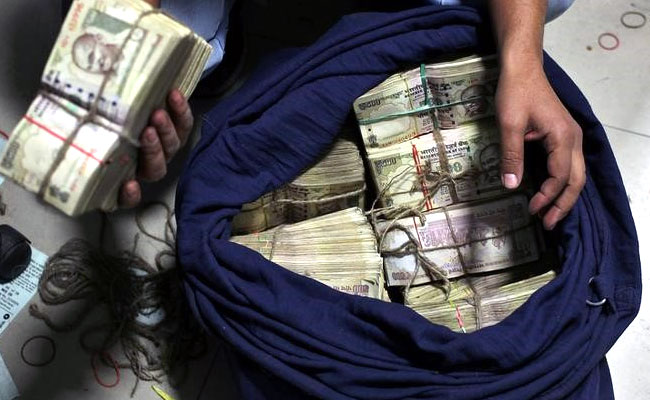Miscalculation by Monetization: With more than half the worth of old notes finding its way back into circulation, the Centre is likely concerned on the loss of revenue

Image: Reuters
And is this why the Centre is providing black money holders yet another opportunity by amending the I-T Act ?
Three weeks into the Centre’s de-monetization move, as many as Rs. Lakh crore of legal tender has been withdrawn from the banks. Latest data put put by the Reserve Bank of India (RBI) , about 56 per cent of such notes have come back into circulation. Between November 10 upto November 27, Rs. 8,44,982 crore worth of notes have been exchanged or deposited (exchange amounted to Rs 33,948 crore and deposits amounted to Rs 8,11,033 crore).
This has clearly taken the government by surprise as wrong estimates of how much of this was ‘black’ money were clearly made by government.
As per most initial estimates, 20 per cent of the total value of the old notes (Rs 15 lakh crore) was pegged to be in black, and was not expected to come back into circulation. Credible estimates by renowned economists put the actual extent of ‘black’ money in circulation to be not more than five to six per cent.
Has this miscalculation, this higher than expected money finding its way back into circulation, prompted the Centre to come out with the Pradhan Mantri Garib Kalyan Yojana 2016?
The Rs 3 lakh crore-odd worth of notes would have become useless come December 30. On the RBI’s balance sheet, liability in the form of ‘notes issued’, would have been extinguished to that extent, leading to an increase in reserves. The surplus transferred to the Centre by way of dividends would fill up its coffers. An easy windfall gain, no doubt.
To ensure that hoarders are dissuaded from tendering their booty, the Centre has been dangling the stick and issuing warnings that cash deposits of above Rs 2.5 lakh could attract tax plus a 200 per cent penalty, in case of income mismatch.
But a substantial amount of money has still managed to come back into circulation, robbing the Centre of its possible bounty.
Additional revenue
This has left the task of examining each high value deposit to the income-tax department which may not have the necessary wherewithal to deal with the massive amount of data flow.
To counter some of these issues, the Centre on Monday came out with Pradhan Mantri Garib Kalyan Yojana 2016 to enable people with undisclosed income to come clean.
They would have to fork out a tax of 30 per cent and penalty of 10 per cent. A surcharge in the form of cess of 33 per cent will have to be paid on the tax, taking the total levy to 50 per cent. This is slightly higher than the 45 per cent that was payable under the Income Declaration Scheme (IDS) 2016.
